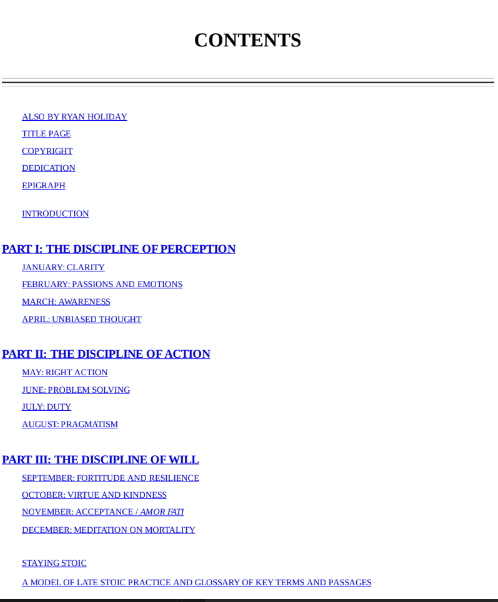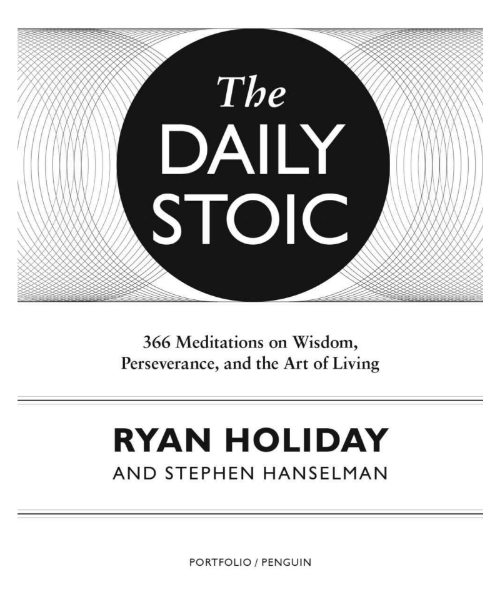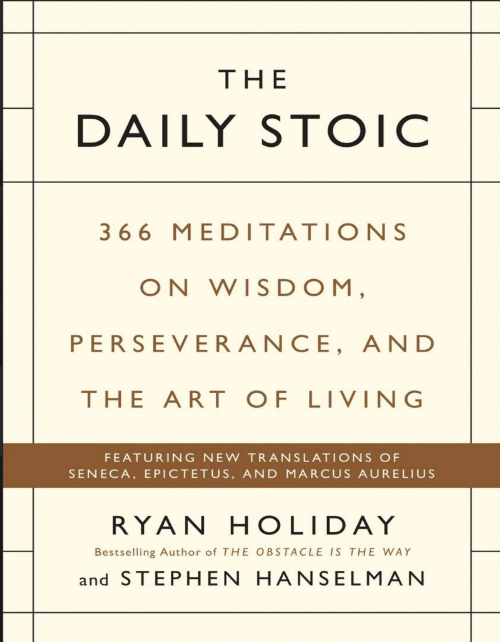


The private diaries of one of Rome’s greatest emperors, the personal letters of one of Rome’s best playwrights and wisest power brokers, the lectures of a former slave and exile, turned influential teacher. Against all odds and the passing of some two millennia, these incredible documents survive. What do they say? Could these ancient and obscure pages really contain anything relevant to modern life? The answer, it turns out, is yes. They contain some of the greatest wisdom in the history of the world. Together these documents constitute the bedrock of what is known as Stoicism, an ancient philosophy that was once one of the most popular civic disciplines in the West, practiced by the rich and the impoverished, the powerful and the struggling alike in the pursuit of the Good Life.
But over the centuries, knowledge of this way of thinking, once essential to so many, slowly faded from view. Except to the most avid seekers of wisdom, Stoicism is either unknown or misunderstood. Indeed, it would be hard to find a word dealt a greater injustice at the hands of the English language than “Stoic.” To the average person, this vibrant, action-oriented, and paradigm-shifting way of living has become shorthand for “emotionless.” Given the fact that the mere mention of philosophy makes most nervous or bored, “Stoic philosophy” on the surface sounds like the last thing anyone would want to learn about, let alone urgently need in the course of daily life. What a sad fate for a philosophy that even one of its occasional critics, Arthur Schopenhauer, would describe as “the highest point to which man can attain by the mere use of his faculty of reason.”
Our goal with this book is to restore Stoicism to its rightful place as a tool in the pursuit of self- mastery, perseverance, and wisdom: something one uses to live a great life, rather than some esoteric field of academic inquiry. Certainly, many of history’s great minds not only understood Stoicism for what it truly is, they sought it out: George Washington, Walt Whitman, Frederick the Great, Eugène Delacroix, Adam Smith, Immanuel Kant.
Today (especially since the recent publication of *The Obstacle Is the Way*), Stoicism has found a new and diverse audience, ranging from the coaching staffs of the New England Patriots and Seattle Seahawks to rapper LL Cool J and broadcaster Michele Tafoya as well as many professional athletes, CEOs, hedge fund managers, artists, executives, and public men and women. What have all these great men and women found within Stoicism that others missed? A great deal. While academics often see Stoicism as an antiquated methodology of minor interest, it has been the doers of the world who found that it provides much needed strength and stamina for their challenging lives.
When journalist and Civil War veteran Ambrose Bierce advised a young writer that studying the Stoics would teach him “how to be a worthy guest at the table of the gods,” or when the painter Eugène Delacroix (famous for his painting *Liberty Leading the People*) called Stoicism his “consoling religion,” they were speaking from experience. So was the brave abolitionist and colonel Thomas Wentworth Higginson, who led the first all-black regiment in the U.S. Civil War and produced one of the more memorable translations of Epictetus. The Southern planter and writer William Alexander Percy.
Stoicism was a school of philosophy founded in Athens by Zeno of Citium in the early third century BC. Its name is derived from the Greek stoa, meaning porch, because that’s where Zeno first taught his students. The philosophy asserts that virtue (meaning, chiefly, the four cardinal virtues of self-control, courage, justice, and wisdom) is happiness, and it is our perceptions of things—rather than the things themselves— that cause most of our trouble. Stoicism teaches that we can’t control or rely on anything outside what Epictetus called our “reasoned choice”—our ability to use our reason to choose how we categorize, respond, and reorient ourselves to external events.
Early Stoicism was much closer to a comprehensive philosophy like other ancient schools whose names might be vaguely familiar: Epicureanism, Cynicism, Platonism, Skepticism. Proponents spoke of diverse topics, including physics, logic, cosmology, and many others. One of the analogies favored by the Stoics to describe their philosophy was that of a fertile field. Logic was the protective fence, physics was the field, and the crop that all this produced was ethics—or how to live. As Stoicism progressed, however, it focused primarily on two of these topics—logic and ethics. Making its way from Greece to Rome, Stoicism became much more practical to fit the active, pragmatic lives of the industrious Romans. As Marcus Aurelius would later observe, “I was blessed when I set my heart on philosophy that I didn’t fall into the sophist’s trap, nor remove myself to the writer’s desk.


